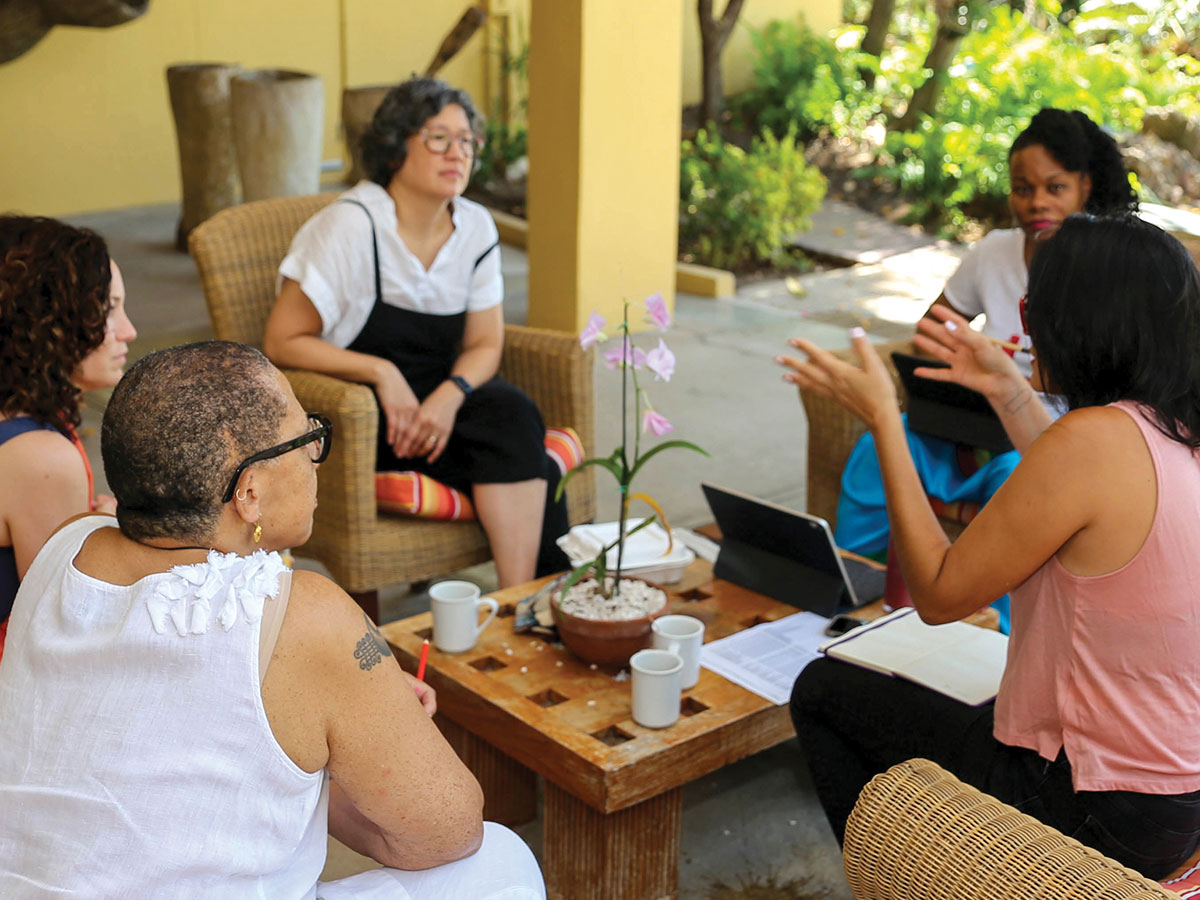
If you want your organization to better support the organizations closest to communities in need, you’ll need to tackle the structural bias that keeps traditional philanthropy from giving smaller, grassroots, and emerging nonprofits and those led by people of color a chance to compete equitably with mainstream, white-led entities – a major component of Driving Equity in grantmaking.
Of course, this is no small feat: Because structural bias is often embedded in every step of the grantmaking process, combatting it requires work and commitment from everyone involved. For that reason, PEAK has developed two member-exclusive How-To Guides for rethinking the process from start to finish: How to Reduce Bias in Grantmaking Strategy, Community Outreach, and Applications, and How to Reduce Bias in Decision-Making and Grant Awards.
To give you a preview of the guidance contained in these resources, here’s a brief look at some of the obstacles involved and solutions suggested for each stage.
Strategy Development
Because strategy development usually falls to individuals at the highest levels, and because those individuals are usually the least diverse in any organization, the work of identifying program, issue, or impact areas to fund often fails to include diverse voices or perspectives.
So what can you do? Support and encourage leaders willing to embed equity throughout the organization. Push them to include representatives of diverse communities in the strategy development process, from the discovery of issues and needs to sourcing consultants, crafting funding priorities and tactics, and more.
Community Outreach
There is a vicious cycle that repeats throughout the grantmaking process: Organizations that already have the financial resources and relationships are the first to receive more funding, meaning that new, smaller, or less connected organizations don’t even make the invite list.
To reach them, you must think beyond traditional communication strategies and reach them where they are: Make sure a press release about your grant opportunities gets to media outlets serving diverse communities; poll area stakeholders to learn about emerging organizations; call groups you’ve identified and give them a personal invitation to apply.
Applications and the Application Process
Because the standard grant application process is lengthy, time-consuming, and onerous, it favors nonprofits that have been given grants consistently: those that already have the infrastructure in place to tackle it. Nonprofits without those resources are at a significant disadvantage.
Fortunately, you can level the playing field in many ways. Simplify the process by removing anything that isn’t truly informing your decision, and be flexible about the format of information required: Maybe you can accept documents that applicants already have on-hand. Add questions, or hold a conversation, about equity work and diverse populations served, then weigh that information alongside more traditional metrics. Review the accessibility of your process, and make it easier for under-resourced organizations to take part; consider deadlines and time stamps, technology, and translation services.
Due Diligence and First Round Review
Because grantmakers tend to prioritize “sustainability,” many emerging and grassroots organizations fail the first round of assessment due to issues of access, documented experience, and capacity. Rethinking ideas of “risk” and “suitability” can uncover a bias towards the same group of nonprofits that always receive funding.
To correct for this bias, consider creating two funding tracks: one for larger, better-resourced organizations and another for new and emerging organizations, each with its own criteria. Consider non-traditional assets like community relationships and staff longevity, reduce the weight of financial health and capacity in decision-making, and overcome any tendency to judge applicants harshly by cultivating a sincere interest in helping grassroots applicants succeed.
Final Review and Decision-Making
As in grant strategy development, final grant review and decision-making usually happens at the highest levels, which are also the least diverse. The effects have been quantified across a range of bias categories; in particular, women are 30 percent less likely to be funded compared to men, and Black applicants receive grants at a rate up to 13 percentage points less than other races.1
The obvious solution is to bring in a more diverse range of reviewers, including representatives from the community you’re seeking to support; you can find support for the effort required – which is significant – in two of our How-To Guides: How to Recruit and Onboard Diverse and Inclusive Grant Committees and How to Facilitate Inclusive Meetings.
Short of that, consider creating an anonymous application review process: Provide only the information that a reviewer truly needs to make a decision, and remove all demographic and identifying information about the organization and the individuals involved.
Monitoring and Reporting
Even when organizations serving diverse communities do receive grants, they are often set up to continue struggling: granted smaller awards with more restrictions, given more rigorous monitoring and reporting requirements, and expected to engage in prescribed “enhancements” to their work that are beyond their capacity.2
 To reconfigure this dynamic, try crafting awards that are more responsive to the organization’s needs: Think multi-year grants for operating support or capacity-building and more flexible agreements regarding modifications. In addition, collaborate with your grantee to design evaluation and reporting processes that support the work being done, rather than create extra burdens.
To reconfigure this dynamic, try crafting awards that are more responsive to the organization’s needs: Think multi-year grants for operating support or capacity-building and more flexible agreements regarding modifications. In addition, collaborate with your grantee to design evaluation and reporting processes that support the work being done, rather than create extra burdens.
To find detailed recommendations for overcoming the bias in your grantmaking process – and better supporting organizations working on the front lines in under-resourced communities – be sure to consult our member-exclusive set of Drive Equity How-To Guides.
Get grounded with Uncovering Unconscious Bias in Philanthropy, then dig deeper with:
- How to Reduce Bias in Grantmaking Strategy, Community Outreach, and Applications
- How to Reduce Bias in Decision-Making and Grant Awards
- How to Recruit and Onboard Diverse and Inclusive Grant Committees
- How to Facilitate Inclusive Meetings
1 Paul Perry: 5 sources of Bias in Your Grant Application Review Process and The Tactical Guide to Reducing Bias in Your Grant Application Review Process, Submittable.
2 Jim Rendon: Nonprofits Led by People of Color Win Less Grant Money with More Strings, The Chronicle of Philanthropy. Emergent Pathways: The Case for Funding Black-Led Social Change, ABFE: A Philanthropic Partnership for Black Communities.


